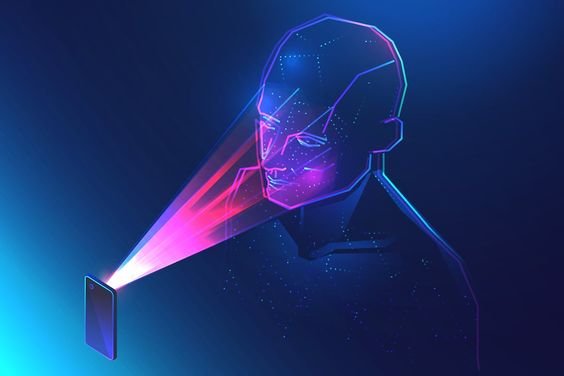
As the demand for more dynamic, immersive, and visually stunning digital content continues to grow, the field of 3D modeling is experiencing a significant transformation. Artificial intelligence (AI) is at the forefront of this revolution, making 3D modeling more efficient, accessible, and creative than ever before. AI-powered 3D modeling software leverages machine learning algorithms, neural networks, and other advanced AI techniques to automate repetitive tasks, optimize workflows, and generate highly detailed models with less manual effort. Whether you are a professional 3D artist, game developer, product designer, or an enthusiast exploring the world of 3D creation, the right AI 3D modeling software can make a huge difference in the quality and speed of your work. In this article, we will explore the top AI 3D modeling software available in 2024, highlighting their key features, capabilities, and benefits.
1. NVIDIA Omniverse
Overview: NVIDIA Omniverse is a powerful, AI-driven 3D collaboration platform that connects various 3D tools and allows creators to collaborate in real-time. It uses AI-powered technologies to streamline workflows and accelerate the creation of high-quality 3D content.
Key Features:
- AI-Powered Animation: Omniverse includes AI tools for automating complex animations, such as facial expressions and character movements. For instance, its Audio2Face tool uses AI to generate realistic facial animations based on audio input.
- Real-Time Collaboration: Multiple users can work together in real-time on the same project across different locations and devices, significantly speeding up the workflow and fostering collaboration.
- Photorealistic Rendering: The platform uses NVIDIA RTX technology for real-time ray tracing, allowing for ultra-realistic lighting, reflections, and shadows.
- Support for Multiple 3D Tools: Omniverse integrates seamlessly with popular 3D applications like Autodesk Maya, Blender, Unreal Engine, and Adobe Substance, enabling a smooth workflow across different platforms.
Why Choose NVIDIA Omniverse: Ideal for teams and professionals working on complex, high-quality 3D projects that require real-time collaboration and state-of-the-art rendering capabilities. It’s particularly beneficial for industries like film, gaming, architecture, and automotive design.
2. Adobe Substance 3D
Overview: Adobe Substance 3D is a suite of tools designed for creating and texturing 3D models. It leverages AI to simplify the creation of highly detailed textures, materials, and 3D assets, making it a favorite among digital artists, game developers, and visual effects professionals.
Key Features:
- AI-Assisted Texturing: Substance 3D uses AI to generate realistic textures and materials quickly, reducing the time spent on manual painting and detailing.
- Material Capture and Creation: Tools like Substance 3D Sampler allow users to create textures and materials from real-world photographs using AI to extrapolate details and ensure seamless integration into 3D environments.
- Dynamic Material Libraries: Users can access a vast library of pre-made, customizable materials, and textures, all of which can be fine-tuned with AI tools.
- Integration with Adobe Ecosystem: Seamlessly integrates with other Adobe tools like Photoshop, Illustrator, and Dimension, offering a unified workflow for 2D and 3D design.
Why Choose Adobe Substance 3D: Best for professionals who need advanced tools for texturing, material creation, and asset design, with powerful AI features that accelerate the creative process. It’s particularly useful for game development, animation, and product visualization.
3. Autodesk Maya with AI Plugins
Overview: Autodesk Maya is a leading 3D modeling, animation, and rendering software widely used in film, TV, and gaming industries. With the integration of various AI plugins and tools, Maya has become even more powerful, allowing for more automated and intelligent workflows.
Key Features:
- AI-Driven Rigging and Animation: Plugins like DeepMotion leverage AI to automate the rigging and animation process, turning video footage into 3D animations quickly and accurately.
- AI-Assisted Modeling Tools: Tools like Ziva VFX use machine learning to simulate realistic muscle, skin, and tissue deformation, significantly reducing the time needed for character modeling.
- Procedural Modeling with AI: Maya’s procedural modeling capabilities are enhanced with AI to create complex environments, terrains, and objects with minimal manual effort.
- Integrated Physics Simulation: AI-driven physics simulations provide realistic effects for collisions, destruction, and fluid dynamics, improving the realism and efficiency of visual effects.
Why Choose Autodesk Maya: Ideal for 3D artists, animators, and VFX professionals looking for a comprehensive suite of tools with robust AI capabilities. It is perfect for projects that require high-end animations, character design, and realistic visual effects.
4. Blender with AI Enhancements
Overview: Blender is an open-source 3D modeling and animation software that has gained immense popularity for its versatility and powerful features. In recent years, Blender has been enhanced with several AI-powered tools and plugins that elevate its capabilities, particularly in modeling and rendering.
Key Features:
- AI-Powered Denoising: Blender uses AI-driven denoising algorithms, like Intel’s Open Image Denoise, to reduce noise in renders, resulting in faster and higher-quality images.
- AI-Assisted Sculpting and Texturing: Plugins like SculptGL use AI to provide dynamic mesh optimization and intelligent sculpting tools, allowing for more fluid and intuitive model creation.
- Smart UV Unwrapping: AI-powered UV unwrapping tools make it easier to map textures onto 3D models accurately, reducing time spent on tedious UV mapping tasks.
- Deep Learning for Animation: AI tools for Blender can automate certain aspects of character animation, like lip-syncing and body movement, saving time and effort for animators.
Why Choose Blender: Blender is an excellent choice for both beginners and professionals looking for a free, open-source 3D modeling tool with a wide range of AI-powered enhancements. It’s ideal for those who want flexibility, community support, and cost-effective options for 3D creation.
5. Luma AI
Overview: Luma AI is a relatively new but rapidly emerging platform that leverages advanced AI technologies, like Neural Radiance Fields (NeRFs), to create photorealistic 3D models and scenes from standard 2D images or videos. Luma AI simplifies the 3D modeling process, making it accessible to users with varying levels of expertise.
Key Features:
- Neural Radiance Fields (NeRFs): Uses NeRFs to generate highly detailed 3D models from a limited number of 2D images or videos, reducing the need for extensive manual modeling.
- Photorealistic Rendering: Capable of creating lifelike models with accurate lighting, shadows, and reflections, ideal for applications in VR/AR, gaming, and virtual tours.
- Cloud-Based Processing: Utilizes cloud-based processing to handle complex computations, enabling fast rendering and model generation without requiring high-end local hardware.
- User-Friendly Interface: Offers an intuitive user interface that simplifies the 3D modeling process, even for beginners.
Why Choose Luma AI: Perfect for users looking for a simple yet powerful solution for creating photorealistic 3D models from 2D images. It is particularly useful for applications in real estate, e-commerce, virtual reality, and augmented reality.
6. ZBrush with AI Add-ons
Overview: ZBrush is a leading software for digital sculpting and painting, known for its robust tools and versatility. With the introduction of AI-driven plugins and features, ZBrush is enhancing its capabilities for creating highly detailed 3D models and sculptures.
Key Features:
- AI-Powered Detail Generation: Plugins like XYZ AI Surface Noise and Texturing help artists quickly add realistic surface details to models, such as skin textures or fabric weaves.
- Dynamic Subdivision: AI tools dynamically adjust subdivision levels based on the model’s complexity, ensuring optimal performance and detail management.
- Automated Retopology: AI algorithms automatically optimize the geometry of 3D models, ensuring efficient rendering and animation without sacrificing quality.
- Intelligent Brushes: AI-driven brushes offer more intuitive control, adapting to the user’s sculpting style and providing real-time feedback for more natural creation.
Why Choose ZBrush: Ideal for digital sculptors, character designers, and artists who need precise control over intricate details. ZBrush’s AI add-ons help streamline complex workflows and enhance creative possibilities.
7. Gravity Sketch with AI Integration
Overview: Gravity Sketch is a 3D design tool that focuses on immersive 3D modeling through virtual reality (VR). With AI integration, it offers innovative ways to create, visualize, and manipulate 3D objects in a fully immersive environment.
Key Features:
- VR-Based 3D Modeling: Allows users to create and edit 3D models in a virtual reality environment, providing a hands-on, intuitive approach to design.
- AI-Enhanced Gesture Recognition: Uses AI to recognize and interpret user gestures, making the modeling process more fluid and natural.
- Collaborative Features: Enables real-time collaboration among team members in a shared VR space, fostering creativity and innovation.
- Cross-Platform Compatibility: Integrates with other 3D design tools and platforms, allowing for seamless export and import of models.
Why Choose Gravity Sketch: Best suited for designers, artists, and teams looking for a unique, immersive way to create 3D models. It’s particularly beneficial for product design, automotive design, and architectural visualization.
8. EmberGen with AI Particle Simulation
Overview: EmberGen is a real-time volumetric simulation tool that uses AI to create complex particle effects such as smoke, fire, explosions, and more. It’s a valuable tool for game developers, VFX artists, and anyone working with dynamic visual effects.
Key Features:
- Real-Time Particle Simulation: Utilizes AI algorithms to simulate and visualize particle effects in real-time, drastically reducing the time required for simulation.
- AI-Assisted Procedural Generation: Automates the creation of complex procedural effects, allowing users to create stunning visuals without needing to adjust every parameter manually.
- GPU-Accelerated Performance: Takes advantage of AI-enhanced GPU acceleration for faster, more efficient simulations.
- Integration with 3D Applications: Supports integration with popular 3D tools like Unreal Engine and Unity, making it easy to incorporate effects into game development or VFX workflows.
Why Choose EmberGen: Ideal for professionals in the gaming and VFX industries who need real-time particle simulations and dynamic effects. Its AI capabilities make creating high-quality effects faster and more efficient.
Conclusion
AI is transforming the 3D modeling industry, making it more accessible, efficient, and creative. The top AI 3D modeling software of 2024, such as NVIDIA Omniverse, Adobe Substance 3D, Autodesk Maya, Blender, Luma AI, ZBrush, Gravity Sketch, and EmberGen, offer a range of innovative features that cater to different needs and applications. Whether you are a digital artist, game developer, product designer, or enthusiast, there is an AI-powered 3D modeling tool suited to your requirements.
By leveraging the power of AI, these tools are not only enhancing the quality of 3D models but also streamlining workflows, reducing manual labor, and opening up new possibilities for creativity and innovation in the digital space. As AI technology continues to advance, we can expect even more exciting developments in the world of 3D modeling.






